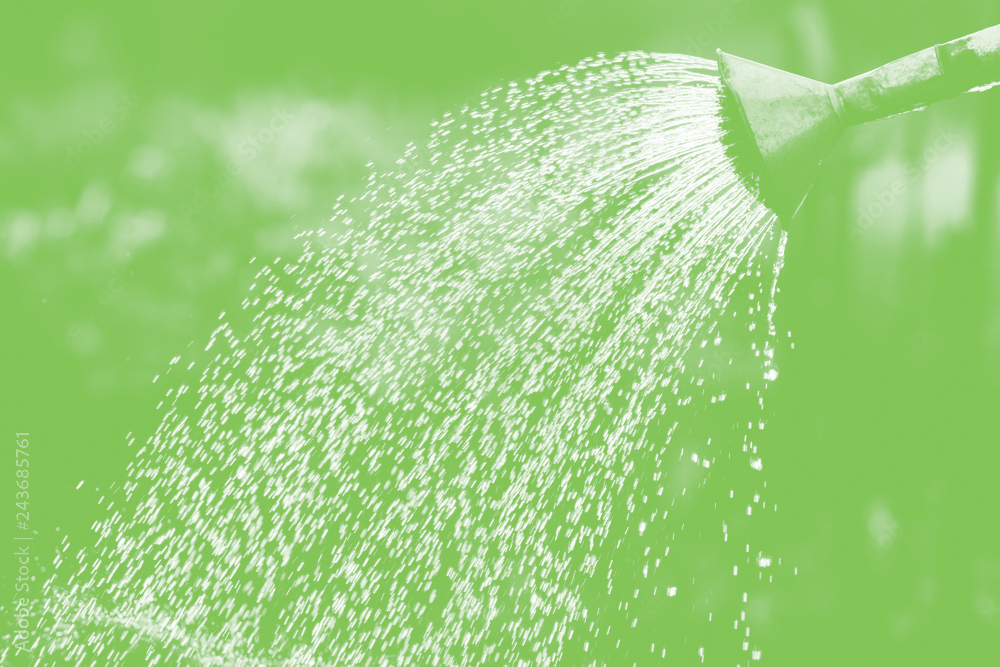
A Beginner’s Guide
to Bonsai Care
Bonsai is the art of training a plant in a specific pattern or form while controlling the size of the plant. It is a common misconception that Bonsai is a specific type of tree, but almost any tree, shrub, or tropical plant could be trained and kept as a Bonsai. The Bonsai technique and the care they need make them a high-maintenance plant.
There are two categories of bonsai, tropical and hardy. When selecting a bonsai, it is important to note what type of plant it is because this will determine its placement and how it should be cared for..
TROPICAL BONSAI
In our area, tropical bonsai will not survive outside in our winters. Some common tropical bonsai are Eugenia, Ficus, Fujian Tea, Jade, Lavender Star, and Serissa. These bonsai are best grown outside for the summer and must be brought indoors once temperatures fall into the 40s. They can be grown indoors year-round if sufficient light and humidity are available, but it is not recommended. Below are basic care instructions for your tropical bonsai.
Light: These bonsai are best kept in a full to part-sun location outdoors. If inside it will need to be placed in a window with all-day sun exposure. A high-quality grow light may be necessary for some plants.
Watering: These bonsai prefer consistent moisture and should be checked daily. In the summer, while outside, they will need to be watered every 1-2 days depending on rainfall and light. During spring and fall you can lessen to 3-4 days. Once brought indoors for the winter you should check its moisture level once or twice a week.
Pruning: Most tropical species can be very fast growing so regular pruning in the summer is necessary. This pruning should be done every couple of weeks to maintain the shape and encourage new growth. When pruning a variety that blooms, like Lavender Star, be mindful of flower buds to not accidentally prune them off.How do I Successfully Seed my Lawn?
HARDY BONSAI
This type of bonsai are winter hardy in our area and must be grown outdoors year-round, or at least have a designated spot where they can experience the cold temperatures necessary to trigger and maintain dormancy. Some common hardy bonsai are Boxwood, Juniper, Lacebark Elm, Japanese Maple, and Quince. Below are basic care instructions for your hardy bonsai.
Light: These bonsai are best kept in a full to part-sun location outdoors.
Watering: Hardy bonsai need consistent moisture and should be checked daily. In the summer they will need to be watered every 1-2 days depending on rainfall and light. During spring and fall you can lessen to 3-4 days. In winter, if it is placed where it can receive precipitation, then you should not have to water unless there are long periods without precipitation accompanied by warmer days. If it is placed where it will not receive precipitation, then every 2-3 weeks should be sufficient.
Pruning: Junipers can be pinched back while deciduous trees, like Elm, Boxwood, and Japanese Maple, will require either pruners or sharp pointed scissors. During the summer, pruning should be done every couple of weeks to maintain the shape and encourage new growth. All pruning should be completed by late summer to allow the plant to harden off before the winter.
Overwintering: While hardy bonsai need to remain outdoors year-round, they do need some protection in the winter. Evergreens, like Junipers and Boxwoods, can be buried in the ground (pot and all) over the winter, while Elms and Japanese Maples should be placed against the house on a covered porch or in an unheated garage window to protect them from the wind.
Along with the care tips summarized above, you will also need to be familiar with fertilization, repotting, and general pruning techniques for your bonsai.
Fertilization: Fertilization of bonsai plants is required to replenish the nutrients in the small amount of soil they are potted in. They should be fertilized regularly with a balanced fertilizer in their growing season, early spring to mid-fall, and minimally from fall to early spring. Tropical bonsai kept indoors year-round should be fertilized year-round.
If using a liquid fertilizer, you should feed the bonsai twice a month. If using a granular slow release, then one application in spring and one in mid-summer is all you need.
Repotting: Since the point of a bonsai plant is to control the size of the plant, repotting should happen minimally, but it is important to check the health of the roots every spring. Young bonsai should be repotted, on average, every 2-3 years; however, for hardy, evergreen bonsai it is more like every 4-5 years. As your bonsai ages, you should also increase the length of time between repotting.
Repotting can be one of the most intimidating parts of caring for your bonsai, but it is very important. Typically repotting consists of removing the plant from its pot, pruning back the roots by 50%, and then planting it back in the same pot. A bonsai-specific soil should be used as regular potting soil retains too much moisture.
Pruning Techiniques: Pruning a bonsai is an art form. There are a multitude of great online resources that give in-depth explanations of pruning styles and how-to guides. Ultimately, it is a personal decision on how you choose to prune and shape your bonsai. The basic idea is that you first need to establish the “front” of your plant and maintain this as the “front” throughout its life.
Once you have established the front, you should visually divide the plant horizontally into three sections. The bottom third should have no branches obscuring the main trunk. The middle third can have limited branches crossing the main trunk, and the top third should completely cover the main trunk. As a base rule, you always prune branches that are growing either straight down or straight up. Then, depending on the plant, you must be aware of where you are making cuts as this will determine which direction the new growth will emerge. Once you have established the shape of your bonsai, continue to prune as needed during the growing season to maintain that shape and size.
To successfully maintain your bonsai, you will need to have several tools on hand. These tools include, sharp, thin scissors, pruners, knob cutters, bonsai-specific wire (multiple sizes), small brush, and needle nose pliers.
For more in-depth care instructions, as well as pruning and wiring tutorials,
visit: bonsaiempire.com or @HeronsBonsaiUK on YouTube.
If you have additional questions about caring for your bonsai, feel free to send us an email here.
Interested in adding a bonsai tree to your plant collection? Stop by in person to see our current selection. We also carry bonsai pots and supplies. You can shop these in-person or online by visiting our online store.

